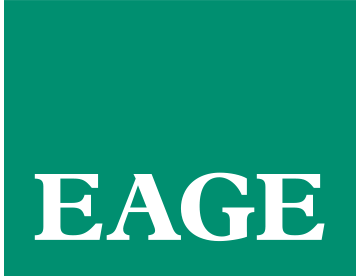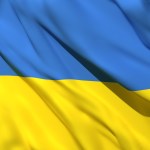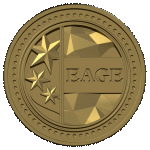As part of World Space Week 2025 (4 – 10 October), we’re excited to announce a webinar that takes our geoscience discussions out of this world – literally.
What: Geophysical Activities in Space Exploration – Moon, Mars and Beyond…
When: 7 October 2025 | 10:00 – 11:00 CEST
Where: Online
 Picture this: a quest that stretches far beyond Earth, where scientists and explorers set their sights on the silent, ancient landscapes of the Moon and Mars. The story begins in the 1970s, during the Apollo missions, when astronauts placed seismic sensors on the lunar surface. With each controlled explosion and every recorded moonquake, they began to build a basic picture of the Moon’s internal structure.
Picture this: a quest that stretches far beyond Earth, where scientists and explorers set their sights on the silent, ancient landscapes of the Moon and Mars. The story begins in the 1970s, during the Apollo missions, when astronauts placed seismic sensors on the lunar surface. With each controlled explosion and every recorded moonquake, they began to build a basic picture of the Moon’s internal structure.
Decades later, in 2019, humanity’s curiosity leapt across the void to Mars. NASA’s InSight mission deployed a modern seismometer onto the Martian surface, aiming to detect vibrations beneath the ground and reveal clues about the planet’s interior. Each mission deepened our understanding of distant worlds, but also exposed the limits of our knowledge, having detected only mainly broad outlines, with few details about the shallow subsurface where hidden treasures might lie. The subsurface – where water, valuable minerals, and rare gases might slumber – remained largely mysterious.
Over the past decade, there has been growing interest in space resources, including water for refueling rockets and commercially valuable minerals and gases such as helium-3, which is seen as a possible fuel for future nuclear fusion. Some space agencies, including NASA and the Luxembourg Space Agency (LSA), are advocating for legal frameworks to regulate the commercialization of these resources. At the same time, other organizations, including private companies, are increasing the number of In-Situ Resource Utilization (ISRU) missions to the lunar surface to test their technologies.
In this webinar, supported by the EAGE Seismic Acquisition Technical Community, we will review the main findings from these activities and compare them to the exploration practices used in the oil and gas industry, especially seismic methods. We will also discuss the importance of collaboration between the oil and gas sector and the space community as the race to explore space resources accelerates.
 Bruno Pagliccia, a senior acquisition geophysicist and space exploration advocate, will guide us through this journey. With a career that bridges traditional geophysics and forward-looking space innovation, Bruno brings a rate and insightful perspective to the evolving role of geoscience in space exploration. Active in the industry since 1998 with a strong focus on onshore geophysics, Bruno has audited seismic crews in remote locations and contributed to innovative acquisition projects—including one on robotics and automation at TotalEnergies. From 2020 to 2022, he founded and led a Luxembourg-based start-up exploring the use of seismic techniques for space resource exploration. During this time, he collaborated with space agencies and private sector partners to assess the feasibility of deploying seismic sensors on the Moon. While funding for a pilot was not secured, he continues to champion the use of adapted Earth-based methodologies for seismic surveys on the Moon and Mars.
Bruno Pagliccia, a senior acquisition geophysicist and space exploration advocate, will guide us through this journey. With a career that bridges traditional geophysics and forward-looking space innovation, Bruno brings a rate and insightful perspective to the evolving role of geoscience in space exploration. Active in the industry since 1998 with a strong focus on onshore geophysics, Bruno has audited seismic crews in remote locations and contributed to innovative acquisition projects—including one on robotics and automation at TotalEnergies. From 2020 to 2022, he founded and led a Luxembourg-based start-up exploring the use of seismic techniques for space resource exploration. During this time, he collaborated with space agencies and private sector partners to assess the feasibility of deploying seismic sensors on the Moon. While funding for a pilot was not secured, he continues to champion the use of adapted Earth-based methodologies for seismic surveys on the Moon and Mars.
Moderated by:
Simon Stähler, Course Director M.Sc. Space Systems (Space Systems and Technology | Department of Earth and Planetary Sciences) at ETH Zürich.
Mark the Launch Window!
With the membership renewals opening on October 1st, this webinar arrives at just the right time: a stellar perk for returning members and a great welcome for new joiners. By coming aboard from October onwards, you’ll unlock full membership benefits through the end of 2026 – including unlimited free webinars and learning resources, discounts on all EAGE courses and events, and more. The perfect boost to fuel your professional journey!
Let’s explore how geoscience can shape the future – on Earth and beyond.
About World Space Week
 World Space Week is a UN-declared global celebration of space and science, held annually from 4 – 10 October. The initiative aims to strengthen the connection between space and society through public education. During the week, thousands of events are hosted worldwide – including educational workshops, contests, space center visits, and expert panels – all focused on showcasing how space technologies contribute to the advancement of humanity.
World Space Week is a UN-declared global celebration of space and science, held annually from 4 – 10 October. The initiative aims to strengthen the connection between space and society through public education. During the week, thousands of events are hosted worldwide – including educational workshops, contests, space center visits, and expert panels – all focused on showcasing how space technologies contribute to the advancement of humanity.






